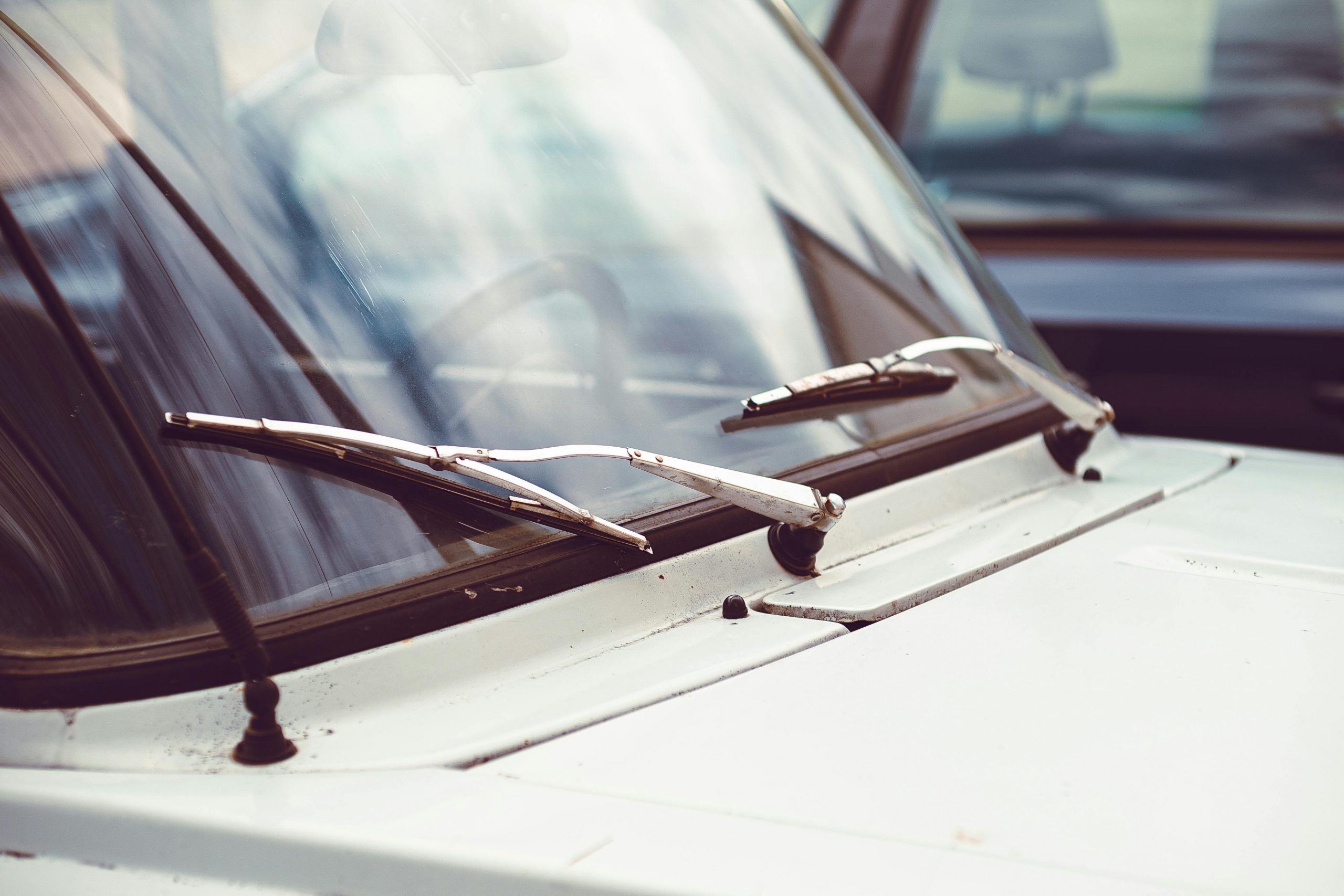
Windshield wipers are small, often overlooked components of your car—but they play a major role in road safety. Whether you’re driving through rain, snow, or dust, clear visibility is essential. Yet many drivers don’t realize that wipers wear out faster than most other car parts.
So, how long do windshield wipers last? On average, they last 6 to 12 months, depending on weather conditions, frequency of use, and maintenance. In this guide, we’ll cover everything you need to know about windshield wiper lifespan, replacement signs, care tips, and how to make them last longer.
Understanding Windshield Wipers

Windshield wipers consist of a few main components that work together to clear your view:
- Wiper blades: Rubber or silicone strips that make contact with the glass.
- Wiper arms: Metal pieces that move the blades back and forth.
- Motor and linkage: The system that powers and controls the motion.
Over time, the rubber on the blades deteriorates from sun exposure, temperature changes, and contact with debris. Once that happens, the wipers become less effective at clearing water, leaving streaks and smudges that can reduce visibility.
Average Lifespan of Windshield Wipers
Most wiper blades should be replaced every 6 to 12 months, but this can vary based on your environment and driving habits.
Factors that Affect Lifespan:
- Climate: Hot, dry climates cause rubber to crack faster, while icy conditions can stiffen the blades.
- Usage: Frequent use during rainy or snowy seasons wears them out sooner.
- Storage: Cars parked outdoors face more UV damage and temperature changes than garage-kept vehicles.
- Material: Silicone wiper blades typically last longer than rubber ones—sometimes up to 18 months.
Quick Reference Lifespan Guide:
| Wiper Type | Typical Lifespan | Ideal for |
| Rubber Blades | 6–9 months | Mild climates |
| Silicone Blades | 12–18 months | Hot or cold extremes |
| Beam Blades | 9–12 months | Curved windshields, high performance |
Regular inspection and timely replacement are key to maintaining safety and performance.
Signs Your Windshield Wipers Need Replacing
Windshield wipers are one of those small car components that often go unnoticed—until they fail during a heavy downpour. But the truth is, wipers rarely stop working all at once. Instead, they gradually lose effectiveness, showing clear warning signs long before they completely fail. Learning to recognize these symptoms early can help you stay safe and maintain clear visibility on the road.
Watch for These Warning Signs:
- Streaking or Smearing:
If your wipers leave streaks or smudges across the windshield, that’s an early sign the rubber blades are wearing unevenly or have hardened. This happens due to exposure to sunlight, dirt, or harsh weather conditions. Streaking not only affects visibility but also increases glare when driving at night or in the rain.
- Skipping or Chattering:
When the wipers skip or chatter across the glass, it means they’re no longer making consistent contact. This can be caused by warped wiper arms, hardened rubber, or even a dirty windshield. The noise can be annoying—but more importantly, it means the blades aren’t clearing water effectively.
- Cracks or Tears:
Inspect the rubber edges regularly. Cracks, splits, or frayed edges reduce the blade’s ability to grip and clear water from the windshield. Dirt, UV rays, and extreme temperatures can speed up this damage. Once cracks appear, replacement is the only solution—no cleaning or repair will restore performance.
- Uneven Cleaning:
If you notice certain areas of the windshield remain wet after each swipe, it’s a sign of uneven pressure or a worn-out blade. This issue can be particularly dangerous because it leaves blind spots that reduce visibility in heavy rain or snow.
- Squealing Noises:
Squeaky wipers aren’t just irritating—they’re a red flag. That sound means the rubber has dried out or hardened, creating friction as it moves across the glass. Sometimes, cleaning the blades with rubbing alcohol helps temporarily, but persistent noise often means it’s time for new wipers.
Extra Tip: Don’t Wait Until They Fail
Most drivers wait until their wipers stop working completely before replacing them, but that’s a risky habit. Once performance starts to decline—even slightly—it’s best to replace the blades right away. Regularly inspecting your wipers every few months, especially before rainy or snowy seasons, can help prevent sudden failure when you need them most.
A clean windshield is critical for safe driving, and functioning wipers play a big part in that. For best results, consider replacing your wiper blades every 6 to 12 months, depending on your climate and driving conditions.
Why Replacing Wipers on Time Matters
It might seem minor, but worn-out wipers can compromise your safety on the road.
Here’s why timely replacement matters:
- Better Visibility: Clear windshields prevent glare and ensure a full view of the road.
- Reduced Stress: You won’t have to strain your eyes to see in bad weather.
- Protects Your Windshield: Damaged wipers can scratch the glass, leading to costly repairs.
- Improved Safety: The clearer your view, the faster your reaction time to road hazards.
How to Check Your Wiper Blades
You don’t need a mechanic to know if your wipers are still in good shape. A quick inspection takes just a few minutes.
Here’s how to do it:
- Lift the wiper arms away from the windshield.
- Run your finger along the rubber edge—look for cracks, splits, or stiffness.
- Spray washer fluid and test the wipers. If they leave streaks, it’s time for new ones.
Pro Tip: Inspect your wipers every month, especially before rainy or snowy seasons.
How to Replace Windshield Wipers

Replacing wiper blades is one of the easiest DIY car maintenance tasks. You can do it in 10 minutes or less.
Step-by-Step Guide:
- Buy the correct size. Check your owner’s manual or measure the old wipers. Sizes vary for driver and passenger sides.
- Lift the wiper arm. Keep it upright and secure—be careful not to let it snap back against the windshield.
- Remove the old blade. Press the release tab or slide it off the hook.
- Attach the new blade. Click it into place until you hear it lock.
- Test the new blades. Spray washer fluid and ensure smooth operation.
Tip: Always replace both wipers at the same time to ensure even performance.
How to Make Windshield Wipers Last Longer
While wiper blades naturally wear down, a few simple habits can help extend their lifespan.
Maintenance Tips for Longer-Lasting Wipers:
- Clean them regularly: Wipe the rubber edge with a damp cloth every few weeks to remove dirt and debris.
- Avoid using wipers on dry glass: Use washer fluid first to prevent friction damage.
- Protect from sun: Park in shaded areas to reduce UV damage.
- Lift blades during winter: Prevent them from freezing to the windshield.
- Replace washer fluid regularly: Dirty or old fluid can clog nozzles and wear down wiper edges.
Pro Tip: Apply a windshield water repellent (like Rain-X) to reduce friction and improve visibility during rain.
Common Wiper Maintenance Mistakes
Even with good intentions, some car owners accidentally shorten their wipers’ lifespan.
Avoid These Mistakes:
- Using household glass cleaners: Ammonia-based products dry out rubber.
- Ignoring squeaking sounds: Noise is often an early warning of blade damage.
- Neglecting rear wiper maintenance: The rear blade also needs replacement at least once a year.
- Forcing frozen wipers: Defrost your windshield before turning on the wipers to avoid tearing the rubber.
A little care goes a long way in preventing unnecessary wear or damage.
Seasonal Wiper Care Tips
Different weather conditions require different care strategies.
Summer:
- Clean bugs and sap promptly to avoid sticky buildup.
- Shade parking helps prevent rubber cracking from UV rays.
Winter:
- Use winter-specific wiper blades designed to resist freezing.
- Fill your reservoir with freeze-resistant washer fluid.
- Lift blades when parking outside overnight to prevent sticking.
Rainy Seasons:
- Inspect wipers more often for streaking.
- Replace as soon as you notice reduced visibility.
Choosing the Right Windshield Wipers
Not all wipers are created equal. Choosing the right ones ensures better performance and longer durability.
Types of Wiper Blades:
- Conventional Blades: Budget-friendly and effective for most vehicles.
- Beam Blades: Sleek design with uniform pressure—ideal for curved windshields.
- Hybrid Blades: Combine the durability of beam blades with the affordability of traditional ones.
Consider These When Buying:
- Material (rubber vs. silicone)
- Climate suitability
- Compatibility with your vehicle model
- Brand reputation and warranty
Auto Maintenance: Don’t Forget Other Essentials
Caring for your wipers is just one part of vehicle maintenance. Regular upkeep keeps your car safe and efficient.
Check these alongside your wipers:
- Windshield washer fluid levels
- Headlight brightness for nighttime visibility
- Tire pressure for better traction in wet weather
- Brake fluid and pads for safety in sudden stops
Good visibility and control go hand-in-hand—especially during harsh driving conditions.
Final Thoughts
Windshield wipers may seem like small components, but they make a big difference in driving safety. The average lifespan ranges between 6 and 12 months, though climate, maintenance, and material all play a role.
Keep an eye out for streaking, skipping, or squeaking—these are your early warnings to replace them. Regular cleaning and smart maintenance habits can easily extend their life and improve your driving experience.
When in doubt, remember: if your visibility isn’t crystal clear, it’s time for new wipers. Safe driving starts with a clear windshield.



